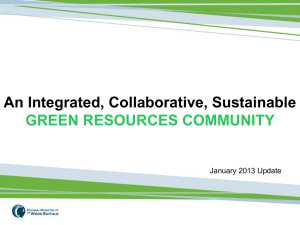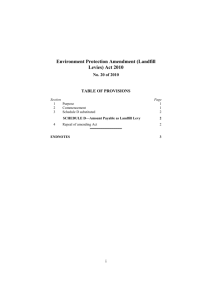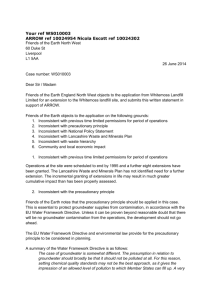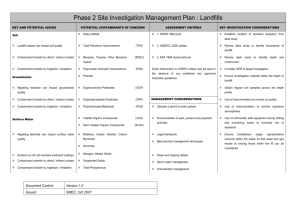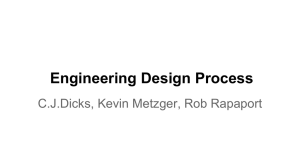GROUNDWATER QUALITY AROUND GOLDEN
advertisement
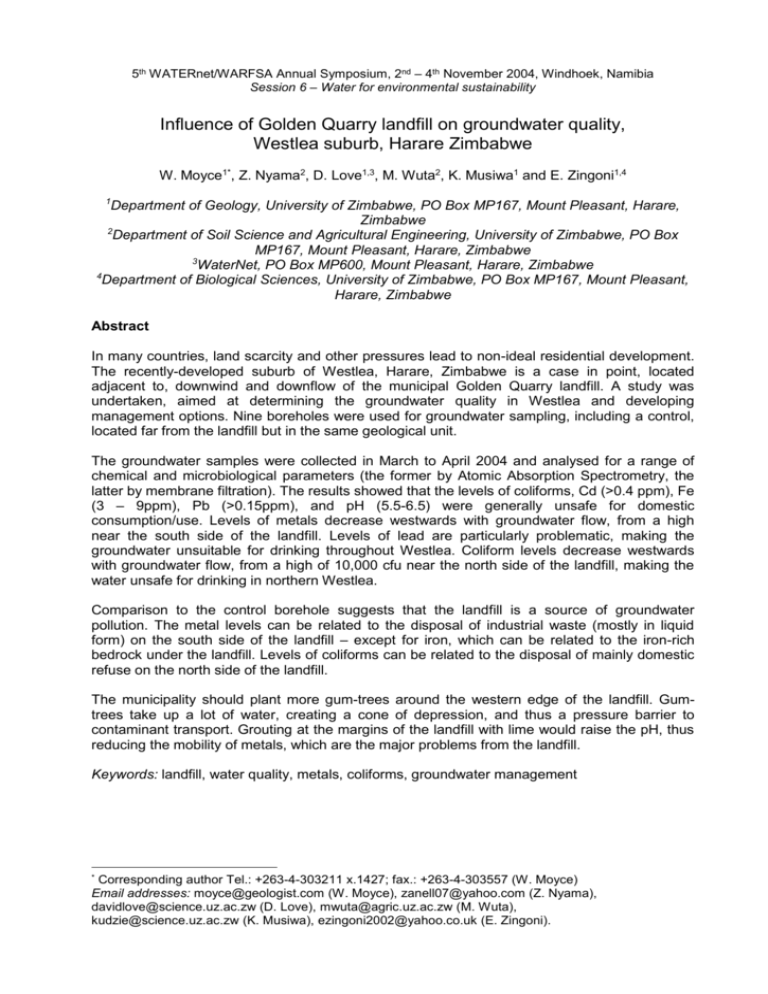
5th WATERnet/WARFSA Annual Symposium, 2nd – 4th November 2004, Windhoek, Namibia Session 6 – Water for environmental sustainability Influence of Golden Quarry landfill on groundwater quality, Westlea suburb, Harare Zimbabwe W. Moyce1*, Z. Nyama2, D. Love1,3, M. Wuta2, K. Musiwa1 and E. Zingoni1,4 1 Department of Geology, University of Zimbabwe, PO Box MP167, Mount Pleasant, Harare, Zimbabwe 2 Department of Soil Science and Agricultural Engineering, University of Zimbabwe, PO Box MP167, Mount Pleasant, Harare, Zimbabwe 3 WaterNet, PO Box MP600, Mount Pleasant, Harare, Zimbabwe 4 Department of Biological Sciences, University of Zimbabwe, PO Box MP167, Mount Pleasant, Harare, Zimbabwe Abstract In many countries, land scarcity and other pressures lead to non-ideal residential development. The recently-developed suburb of Westlea, Harare, Zimbabwe is a case in point, located adjacent to, downwind and downflow of the municipal Golden Quarry landfill. A study was undertaken, aimed at determining the groundwater quality in Westlea and developing management options. Nine boreholes were used for groundwater sampling, including a control, located far from the landfill but in the same geological unit. The groundwater samples were collected in March to April 2004 and analysed for a range of chemical and microbiological parameters (the former by Atomic Absorption Spectrometry, the latter by membrane filtration). The results showed that the levels of coliforms, Cd (>0.4 ppm), Fe (3 – 9ppm), Pb (>0.15ppm), and pH (5.5-6.5) were generally unsafe for domestic consumption/use. Levels of metals decrease westwards with groundwater flow, from a high near the south side of the landfill. Levels of lead are particularly problematic, making the groundwater unsuitable for drinking throughout Westlea. Coliform levels decrease westwards with groundwater flow, from a high of 10,000 cfu near the north side of the landfill, making the water unsafe for drinking in northern Westlea. Comparison to the control borehole suggests that the landfill is a source of groundwater pollution. The metal levels can be related to the disposal of industrial waste (mostly in liquid form) on the south side of the landfill – except for iron, which can be related to the iron-rich bedrock under the landfill. Levels of coliforms can be related to the disposal of mainly domestic refuse on the north side of the landfill. The municipality should plant more gum-trees around the western edge of the landfill. Gumtrees take up a lot of water, creating a cone of depression, and thus a pressure barrier to contaminant transport. Grouting at the margins of the landfill with lime would raise the pH, thus reducing the mobility of metals, which are the major problems from the landfill. Keywords: landfill, water quality, metals, coliforms, groundwater management * Corresponding author Tel.: +263-4-303211 x.1427; fax.: +263-4-303557 (W. Moyce) Email addresses: moyce@geologist.com (W. Moyce), zanell07@yahoo.com (Z. Nyama), davidlove@science.uz.ac.zw (D. Love), mwuta@agric.uz.ac.zw (M. Wuta), kudzie@science.uz.ac.zw (K. Musiwa), ezingoni2002@yahoo.co.uk (E. Zingoni).

